28 best air-purifying plants for the home

Looking for air-purifying plants? Some scientists have suggested that choosing the right air purifying plants for your home can help detoxify the air in your living spaces, meaning your houseplants not only look lovely but work a little harder to clean the air you breathe in.
NASA's Clean Air Study found that there are a number of air purifying plants that can detoxify your home from the airborne toxins, dust and germs that can be found in a variety of household products, materials and furniture.
A follow-up study in 2019 showed that to make a substantial difference to the air quality inside your home, you would need a large number of house plants working together to clean the air – up to 93. It must be noted that plants should not be considered a substitute for an air-purifying device.
That said, plants can go some way to help detoxify the air, alongside other measures. The best air-purifying plants include the Peace Lily, Aloe Vera, Dracaena, Spider Plant, Boston Fern and Chrysanthemums.
Read on for our list of the best air-purifying plants and how to care for them so that they thrive…
The best air-purifying plants for the home
1. Barberton Daisy
As well as injecting a cheerful burst of red, yellow, orange or pink into your home, the Barberton daisy is an effective cleanser of the toxins formaldehyde, trichloroethylene, and benzene, found in a range of household materials from paints to synthetic fibres.
Care advice: Place the plant in a room with plenty of natural light and keep the soil moist but well-drained.

2. English Ivy
This easy-growing perennial vine is particularly effective at reducing airborne faecal particles which makes it the perfect air-purifying plant for your bathroom or en suite. In addition, studies have shown that ivy can also help combat mould levels in the home.
Care advice: Provide your English ivy with generous watering and four hours of direct sunlight a day, and it will return the love to you with clean, detoxified air.

3. Snake Plant or Mother-in-Law's Tongue
With this plant in your bedroom, you're in for a great night's sleep. Also known as Mother-in-Law's Tongue, this yellow-tipped succulent releases oxygen at night, helping you to breathe better while sleeping. It is one of the best plants for filtering the air of formaldehyde, xylene, benzene, toluene, and trichloroethylene.
Care advice: Be mindful not to overwater, as the roots are prone to rot in moist soil.

4. Chrysanthemum
Brighten up your kitchen or living room with a chrysanthemum. These pretty blooms help to filter out a host of toxins including ammonia and benzene, which is often found in plastics, detergents, and glue.
Care advice: This plant loves sunlight, so place it in a spot near a sunbathed window.

5. Spider Plant
For those of you who are houseplant newbies, the resilient spider plant is a perfect choice. It will quietly battle toxins including carbon monoxide and xylene, a solvent used in the printing and rubber industries. If you have pets, this is one of the few houseplants that are non-toxic to animals.
Care advice: You can also repot the tiny 'spiderettes' and grow a whole family of plants that will pretty much take care of themselves... and you.

6. Aloe Vera
A healing aloe plant is a lovely addition to your kitchen windowsill, as it loves a sunny spot. While being on hand to soothe any kitchen burns, this succulent will purify the air of formaldehyde and benzene, found in varnishes, floor finishes, and detergents.
Care advice: This plant will thrive in a sunny location.

7. Broad Lady Palm
This is one of the few plants that can help reduce levels of ammonia that can be found in a range of cleaning products. They are expensive to buy fully-grown so you might want to shop around for a smaller one or start from seed.
Care advice: Humidity-loving, this plant will be very happy in your bathroom.

8. Red-edged Dracaena or Dragon Tree
Trichloroethylene and xylene are amongst the pollutants fought by this spiky, slow-growing plant. The leaves have a bright red trim which adds a flash of colour to your home.
Care advice: This plant has the potential to grow to 8ft, so keep it in a room with high ceilings and reasonable sunlight.

9. Boston Fern
Easy-care Boston Ferns were shown in the NASA study to help remove pollutants such as formaldehyde, xylene, toluene and benzene. The flowing leaves make them ideal to hang and add a pop of vivid green to a room.
Care advice: Mist this humidity-loving fern a couple of times a week, or keep in a bathroom. Keep out of direct sunlight.

10. Chinese Evergreen
This tropical plant is proven to be an effective cleanser of formaldehyde and benzene, found in detergents and cosmetics.
Care advice: The Chinese evergreen enjoys low-lit and humid conditions, so will thrive in your bathroom. If you choose to keep the plant somewhere else, remember to mist the leaves occasionally to prevent browning.

11. Devil's Ivy or Pothos
Famed for its large, waxy leaves, the Devil's Ivy is perfect for keeping the air in your home clean. If you're not very good at taking care of plants, this one is brilliant to consider as it works well in most light conditions.
Care advice: While the Devil's Ivy will thrive anywhere, they prefer brighter spots in the home. They also love moisture, so make brilliant bathroom plants. Water weekly or whenever the soil feels dry.

12. Kentia Palm
The beautiful Kentia Palm — also known as the Thatch Palm — is a species of flowering plant that comes from the palm family Arecaceae. Perfect for those who live in flats, they are incredibly resilient, elegant and air-purifying.
Care advice: The Kentia Palm prefers bright, indirect light but will tolerate shade. To avoid overwatering, make sure you leave the top soil to go dry first. If it isn't getting enough water, you will notice the tips of the leaves turning brown.

13. Rubber plants (Ficus elastica)
This hardy low-maintenance houseplant is one of the most popular, thanks to its striking look. A natural humidifier, a previous study found that it had been recommended by NASA as one of the best for cleansing the air. Perfect for brightening up a desk or windowsill.
Care advice: Easy to care for, a rubber plant can grow well on low levels of light. It's worth knowing that it's toxic to dogs and cats, so be extra careful if you have one close to your pets.

14. Pineapple Plant
A type of Bromeliad, Pineapple Plants create quite the statement in the home. With dramatic foliage and large leaves, these are known for purifying the air and removing harmful toxins. Ideal if you're looking to add a touch of the exotic to your interiors.
Care advice: Pineapple Plants love warm, sunny conditions so they're best kept close to sunlight or in a conservatory. They don't need a lot of water, so wait until the soil has dried out before watering, and then water the leaves and soil.
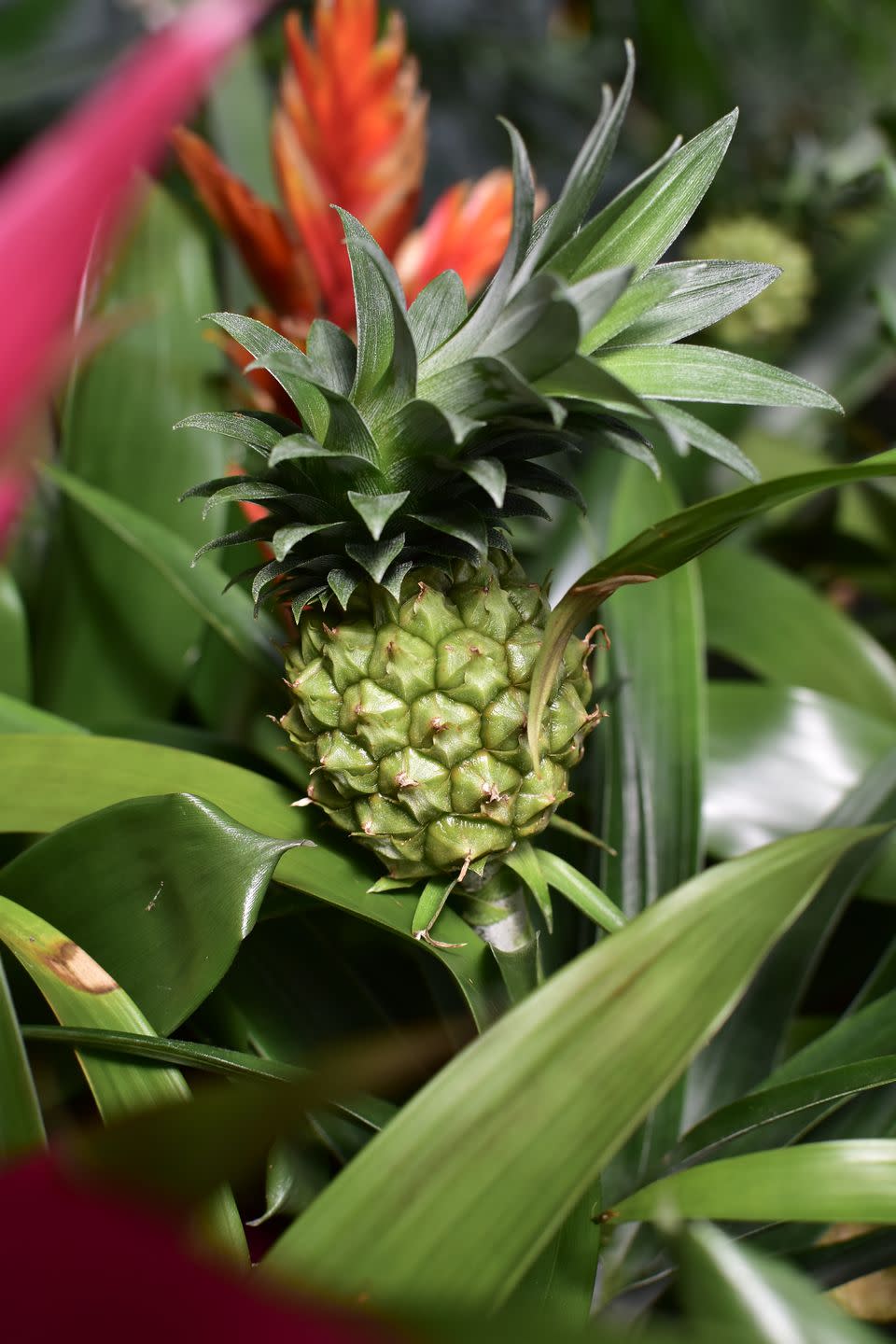
15. The Flamingo Lily
Perfect for adding a pop of colour to your room, the Flamingo Lily is a great air purifying plant for beginners and city-dwellers. As well as having salmon-red, heart-shaped leaves, it's excellent at purifying the air.
Care advice: Keep your Flamingo Lily close to bright areas, but away from direct sunlight. To ensure it thrives, water yours once or twice a week. They also work particularly well in humid areas, such as the bathroom or kitchen.
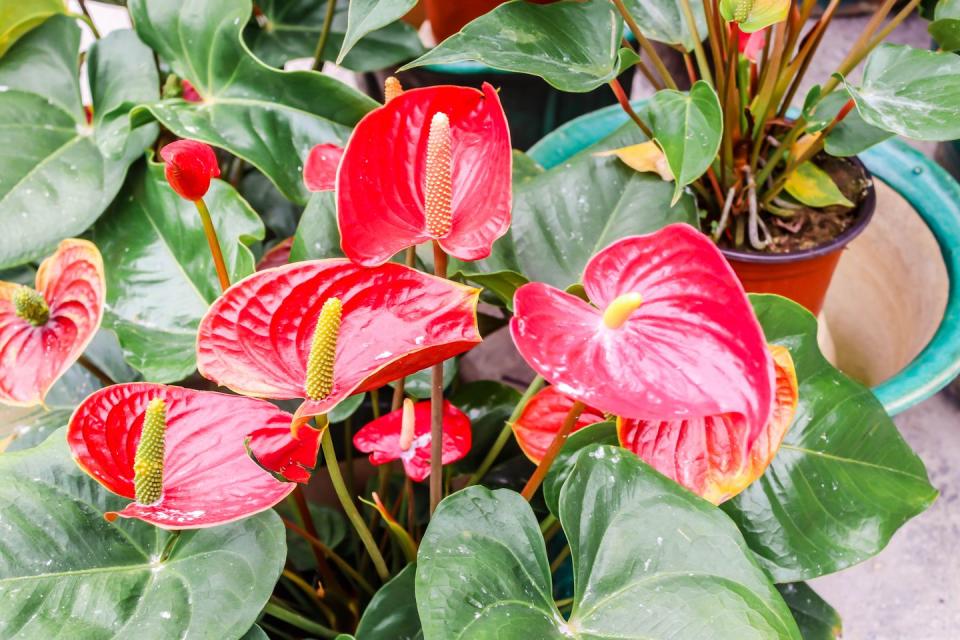
16. Kimberly Queen Fern
With a shapely form and gracefully arching fronds, the Kimberly Queen Fern is perfect for the not-so-green-fingered as they don't require much care. Considered one of the most effective indoor air purifiers, they do exceedingly well when placed in low light areas.
Care advice: Keep them in a bright area and ensure you water them every five to seven days. During the heat of the summer, they may need watering more often.
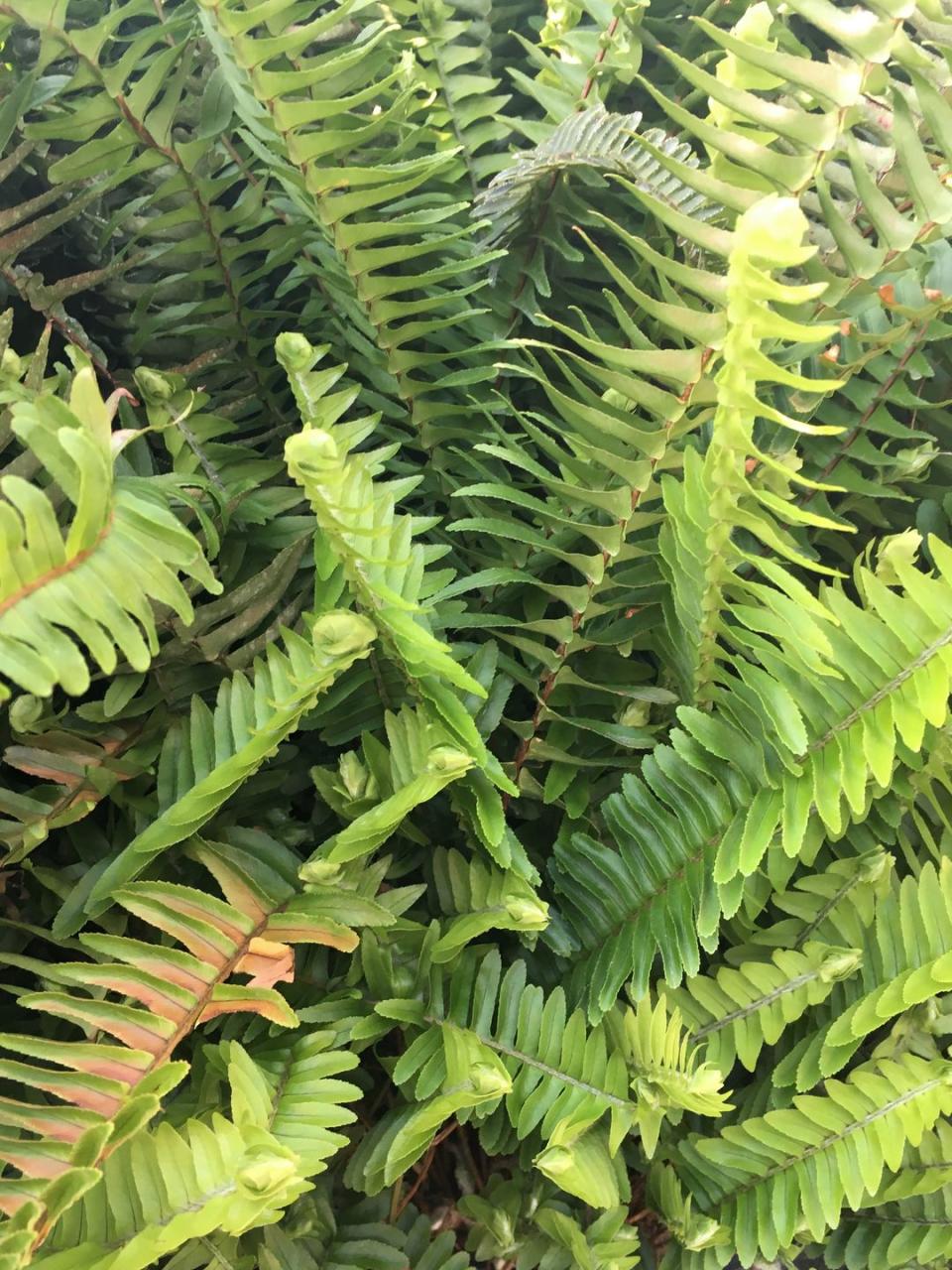
17. Bamboo Palm
Perfect for low light conditions, the Bamboo Palm makes the perfect focal point in any living area. Its graceful, arching leaves make great all-around air cleaners, specifically famed for removing formaldehyde from the air.
Care advice: Water regularly through the growing season, but it's advised you let the surface of the soil dry out slightly before re-watering.
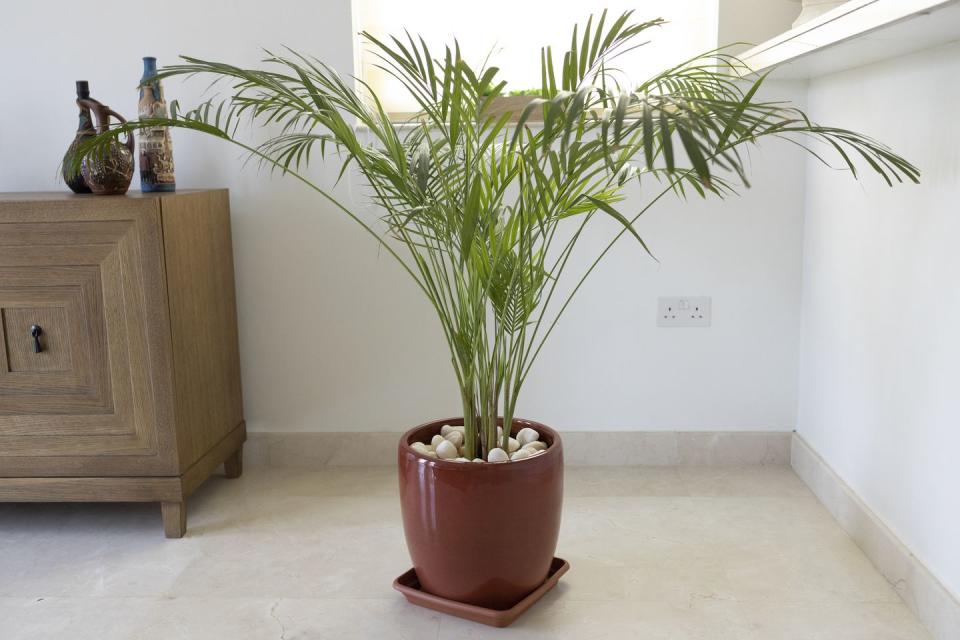
18. Dracaena
This popular houseplant, which originates from forests in Africa, is one of the most effective houseplants in air purification. As well as keeping the air indoors fresh, it looks particularly striking when placed on a coffee table.
Care advice: These plants require less water than other plants, so keep them hydrated by misting the leaves with water. Make sure the water stays moist but not soggy. Overwatering can lead to root rot.

19. Peace Lily
A long-time favourite for houseplant lovers, the Peace Lily is one of the top air purifying plants as it can help filter out certain harmful compounds. If you do plan on adding this one to your plant collection, it's worth knowing that it is poisonous to cats and dogs.
Care advice: Peace lilies can tolerate short periods of dry soil, but their leaves will start to brown if neglected for too long. To keep it thriving, place it in bright, indirect light and keep the soil consistently moist.
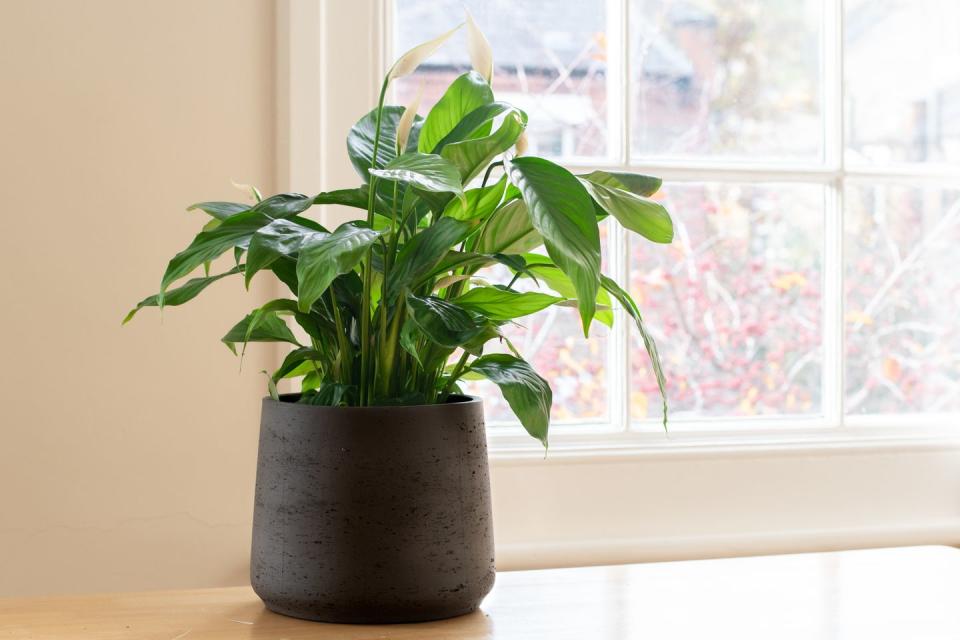
20. Scarlet Star Bromeliad
With leathery leaves and a pop of colour, the Scarlet Star Bromeliad is a beautiful houseplant that is incredibly long-lasting. As well as helping to clean up the air in your home, these flowering plants love humid environments and are great when placed in the bathroom.
Care advice: Ensure this plant is always well watered, but never soggy. Place your plant in a location with moderate to bright light year-round, avoiding direct sunlight.
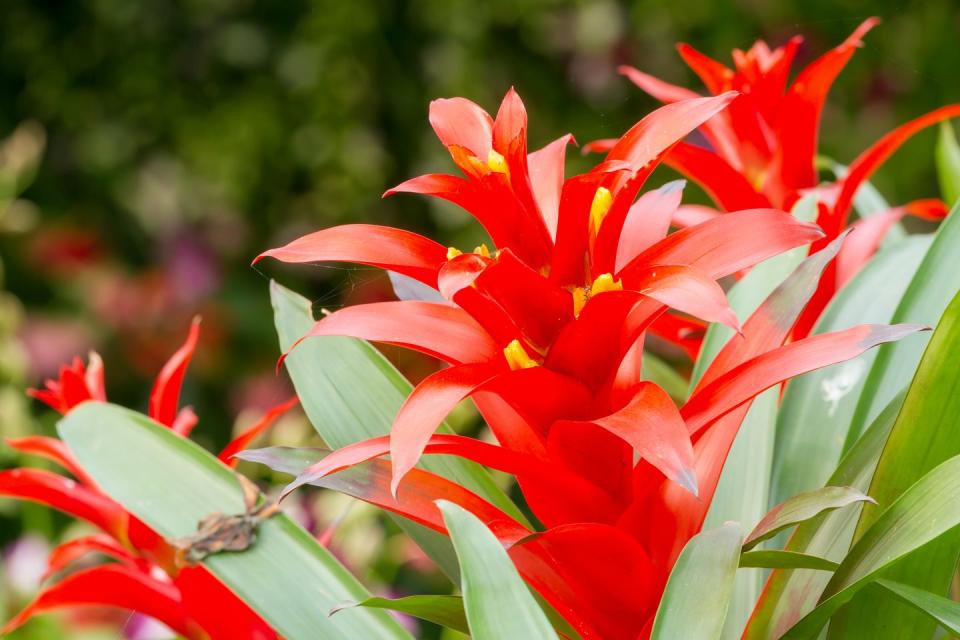
21. Philodendron
Famous for large, glossy green leaves, the Philodendron purifies the air by removing formaldehyde — a chemical compound which tends to occur in building materials. As well as looking beautiful placed at home, you can be sure that it will also clean the air for you.
Care advice: Philodendron care is simple, as the plant can readily adapt to any indoor environment. Ensure it has plenty of sunlight, fertiliser and water.
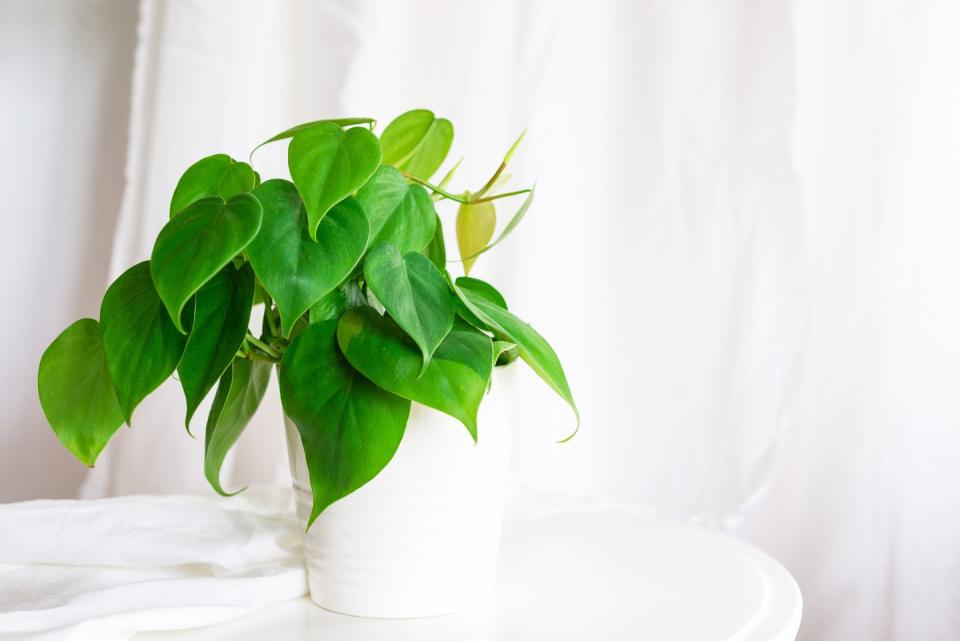
22. Calathea
Known for the unique leaf movements of patterned foliage, Calathea plants have an exotic feel that will brighten up any room. With their beautiful yet unique colouring, the Calathea plant purifies the surrounding air by filtering out many poisonous compounds.
Care advice: To survive, they need to be placed in a consistently warm and bright spot, yet not in direct light.
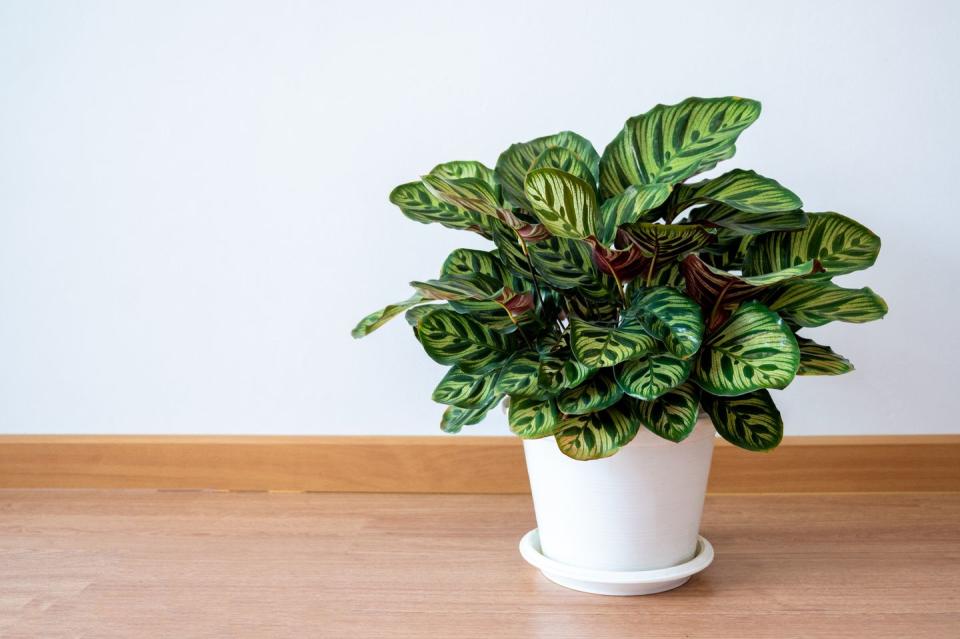
23. ZZ plant (Zanzibar gem)
With its wide, attractive, dark green leaves, this eye-catching houseplant is perfect for a home office. Not only are they hard to kill (ideal for beginners), but these plants work hard to remove toxins such as xylene, toluene and benzene from the air.
Care advice: Zanzibar gems need watering every two to three weeks, however, expect to water them more often in brighter light.
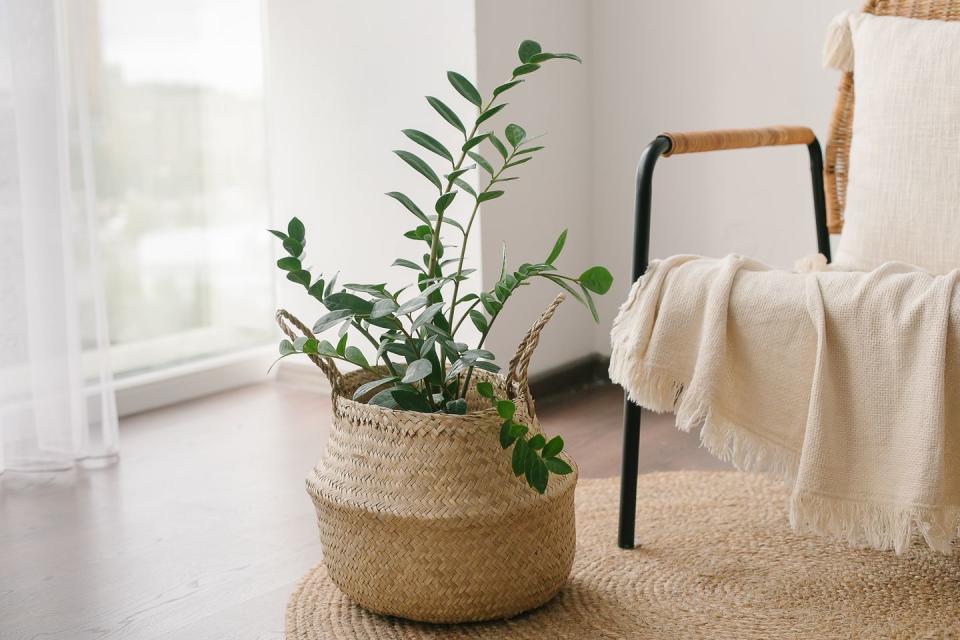
24. Croton
These varied plants are incredibly popular houseplants, loved for their colourful foliage and nearly limitless leaf forms. As well as having some of the boldest and brightest leaves around, Crotons also help to filter out airborne toxins.
Care advice: This is a tropical houseplant, so caring for it involves proper watering and humidity. While it needs frequent watering, too much water can cause root rot.
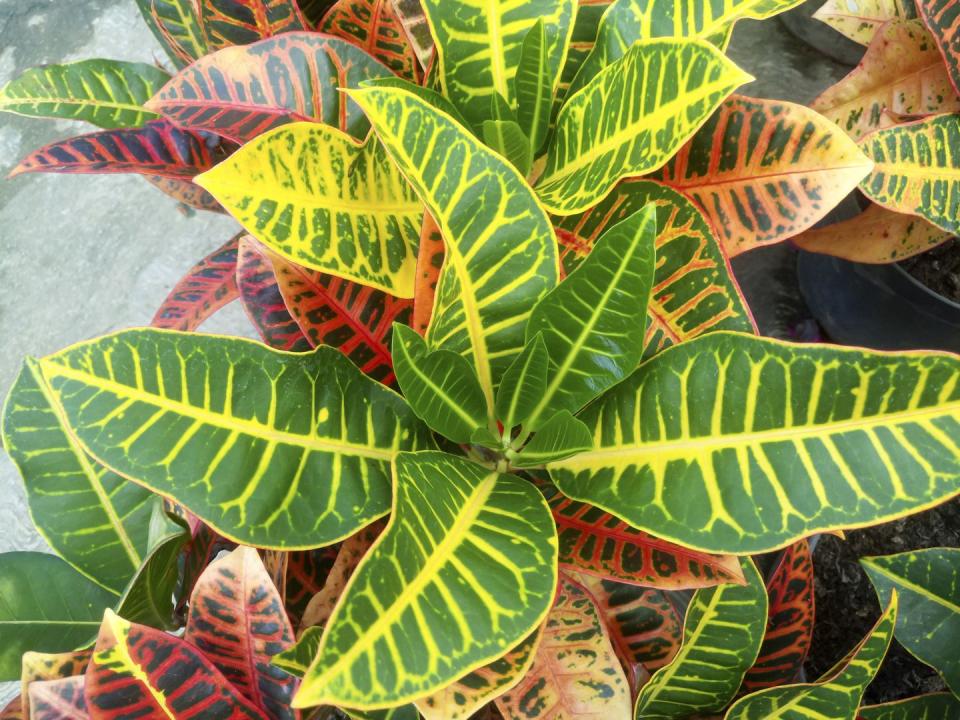
25. Dieffenbachia (dumb canes)
The Dieffenbachia is a lush and showy plant with oval leaves that are attractively marked with dark green at the edges. Ideal for creating a tropical look, its foliage takes toxins out of the air, so your family can breathe easier.
Care advice: Dieffenbachias like regular moisture and do not want to dry out, however make sure you don't overwater it.
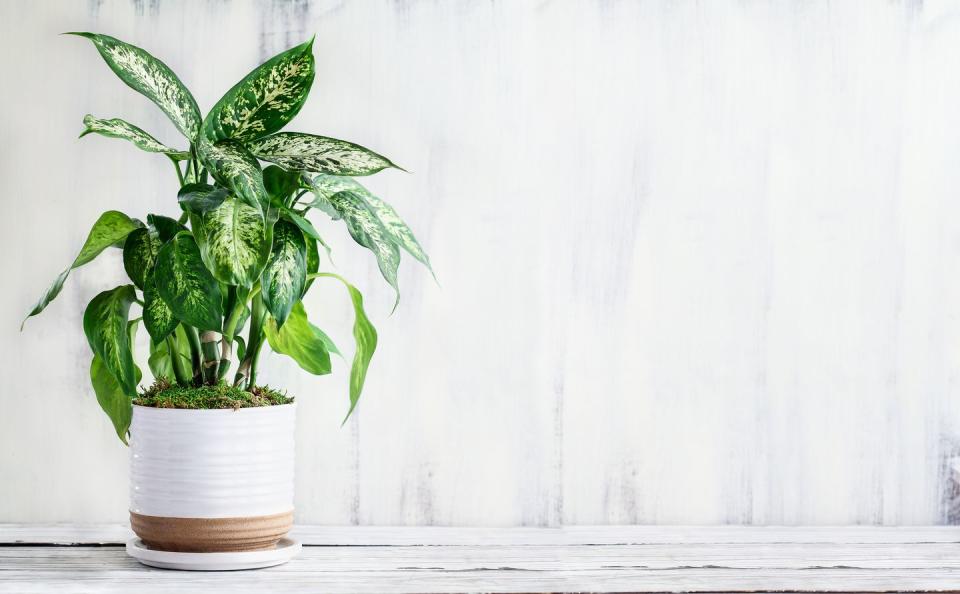
26. Clivia
Grown for their bold strap-shaped, dark green leaves, Clivia houseplants are tough, resilient and thrive when neglected. Not only do they purify the air, but they will also produce the most stunning bright orange blooms.
Care advice: Clivias should be placed in bright, filtered or indirect light. Scorching sunlight may burn the leaves, so place pots away from bright sun and other sources of heat.
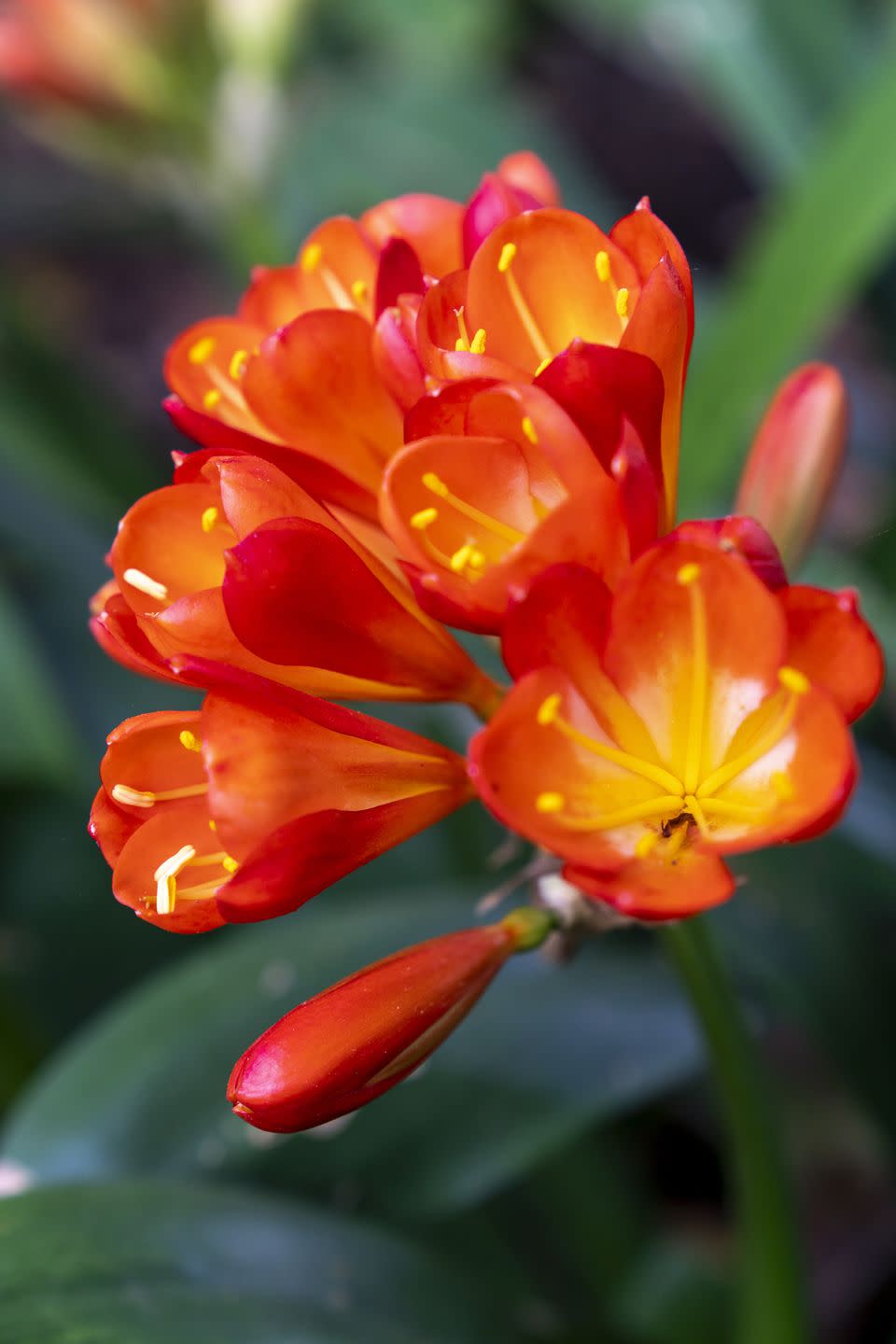
27. Weeping Fig
Popular houseplants since the Victorian times, weeping figs can help to tackle levels of formaldehyde, xylene, and toluene.
Care advice: They are fairly fussy plants that don't like change. Keep your weeping fig in bright, indirect light away from drafts, and it will be a trusty purifier for many years to come.

BUY NOW
28. Monstera Deliciosa (Cheese Plant)
With their glossy, distinctive split leaves, monsteras make a striking addition to any room (which is probably why they are so popular on Instagram). They can also contribute to removing nasties such as formaldehyde, benzene, and trichloroethylene.
Care advice: Keep in a bright space but out of direct sunlight and water when the soil dries out. To keep leaves shiny, you can wipe them with a damp cloth every so often. Monsteras are climbers and can grow big so consider investing in a moss pole.

Alocasia

Yucca elephantipes

Monstera deliciosa

Howea forsteriana

Floor bamboo

You Might Also Like


